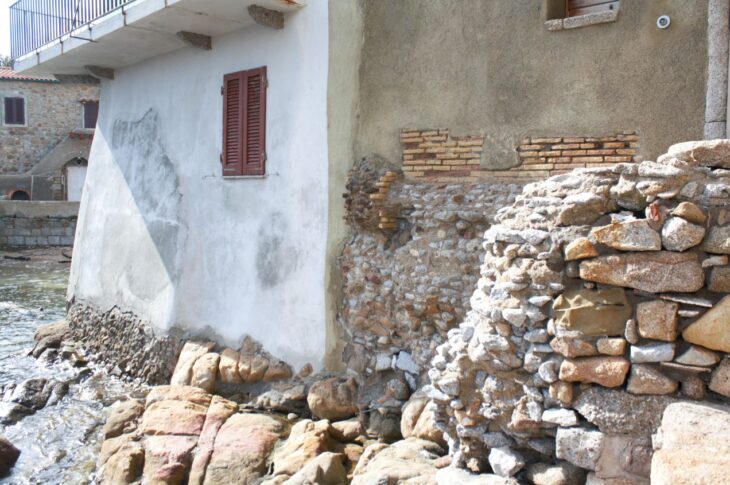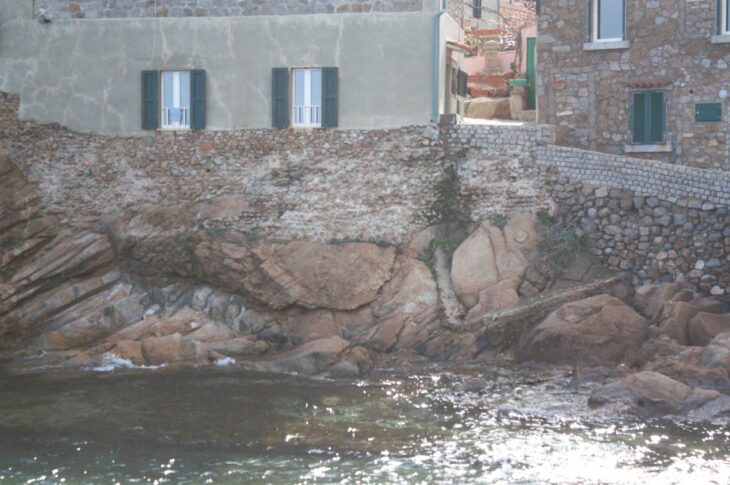Point of Interest
The Saracen villa – Giglio Porto
A majestic Roman villa hidden but still visible inside a fishing village on the Island of Giglio. Strolling through the narrow streets of Giglio Porto you will notice imposing walls incorporated into more recent dwellings: this is one of the largest Roman villas on the islands of the Archipelago which, at one stage, belonged to the Emperor Nero. Enjoy looking for the surviving traces as you pass crystal-clear inlets and rocks where the old fishermen's houses are directly resting!
The Villa del Saraceno is a Roman complex dating back to the Republican and Imperial periods (from the 2nd-1st century B.C. to the 3rd-4th century A.D.) which is considered one of the great maritime villas from this period. Most of the modern houses built in the port district of the village are sitting directly on the ruins of this villa.
The villa, which went through several construction phases, had a residential area on at least two levels, with an extensive layout of rooms and two large terraces. Of particular monumental importance must have been the area of the northern terrace, built in a semi-circular shape, supported by counterforts (as defined by the Roman architect Vitruvius) – and the main section of the villa built in a quadrangular shape at a higher altitude, supported by cryptoporticos along both the cliff side and the western side of the slope.
The traces of Giglio Porto’s ancient history blend with its modern town… a simple walk through the village streets in search of the Roman walls will give you an immediate idea of the size of the Villa del Saraceno!
The earliest known occupation of the site was during the 4th-century B.C., when it was used as a fortification to protect against Punic invasion, during a time when the political geography of the Tyrrhenian Sea was extremely uncertain due to the different interests of the major players (Greek, Punic, Etruscan and Roman). Once Roman domination of the Mediterranean Sea had been established, the rich senatorial families engaged in the construction of large residential complexes overlooking the sea, many of which were built on the islands of the Tuscan Archipelago.
On Giglio, the Domitii Ahenobarbi family built the first general layout of the villa between the end of the Republic and the early Augustan age. This important family was linked to the Emperor Nero, who, not surprisingly, promoted an extensive programme of renovation at the complex during his reign. The next important renovation of the complex dates from between the late Flavian and Trajan’s ages, when the entire Tyrrhenian coast was involved in an overall reorganisation of its port infrastructures, which was naturally one of the key features of the maritime Villa del Saraceno. The building later fell into disrepair and was abandoned in the 4th century AD. In subsequent years, the villa was used as a necropolis, and later as a quarry for building material, when many of its decorative features were lost.
Info
How to get there
The Roman Villa del Saraceno is located in the centre of Giglio Porto. All you have to do is get off the ferry and explore its remains which are still visible in the masonry of the more modern buildings.
To Learn More
Bibliography
- P. RENDINI 2001, Impianti per la lavorazione di pesce conservato al Giglio e a Giannutri, in Atti del II Convegno nazionale di archeologia subacquea. Castiglioncello, 7-9 settembre 2001, pp. 175-188.
- P. RENDINI 2016, La villa romana di Giglio Porto (Isola del Giglio): la decorazione parietale in F. DONATI (a cura di) Pitture murali nell’Etruria romana: testimonianze inedite e stato dell’arte, atti della giornata di studi (Pisa 2015)
- J. TABOLLI, M. COLOMBINI, G. GRIMAUDO 2019, in Bollettino di Archeologia on-line, Sbarcando al Giglio. La ripresa delle indagini archeologiche a Giglio Porto a terra e in mare.


